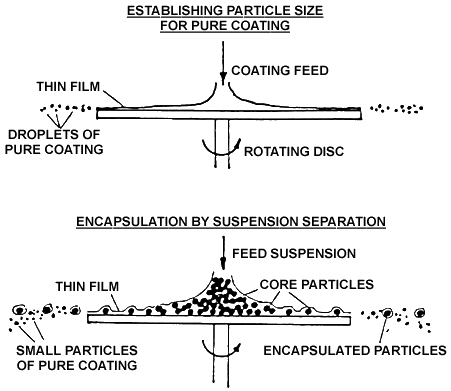 |
Rotational suspension separation
Rotational suspension separation is a microencapsulation technique used since 1983. In principle, the process involves suspending core particles in a pure, liquefied coating material, then pouring the suspension through a rotating disk apparatus under such conditions that excess liquid between the core particles spreads into a film thinner than the core particle diameters. The excess liquid is then atomised into very small particles that are separated from the product and recycled. The core particles leave the disk with residual liquid still around them, which forms the coating. Chilling or drying hardens the particles. The following figure illustrates the principles behind this process.
 |
Rotational suspension separation is a continuous, high-capacity process that takes seconds to minutes to coat core particles. The process can handle a wide variety of core materials (including temperature-sensitive cores) and coating materials, in solid, liquid or suspension states, without presenting aggregation problems. Further more, the process handles each particle only once and, under most conditions, produces no uncoated particles. The process has been used successfully to coat particles ranging 30 m to 2 mm. Coatings have been produced with thickness ranging from 1 to 200 m. Microcapsules have been prepared with payloads ranging from 1 to 97%, depending upon the particle diameter. Another advantage associated with rotational suspension separation is that the size distribution of the encapsulated particles resembles that the uncoated particles.